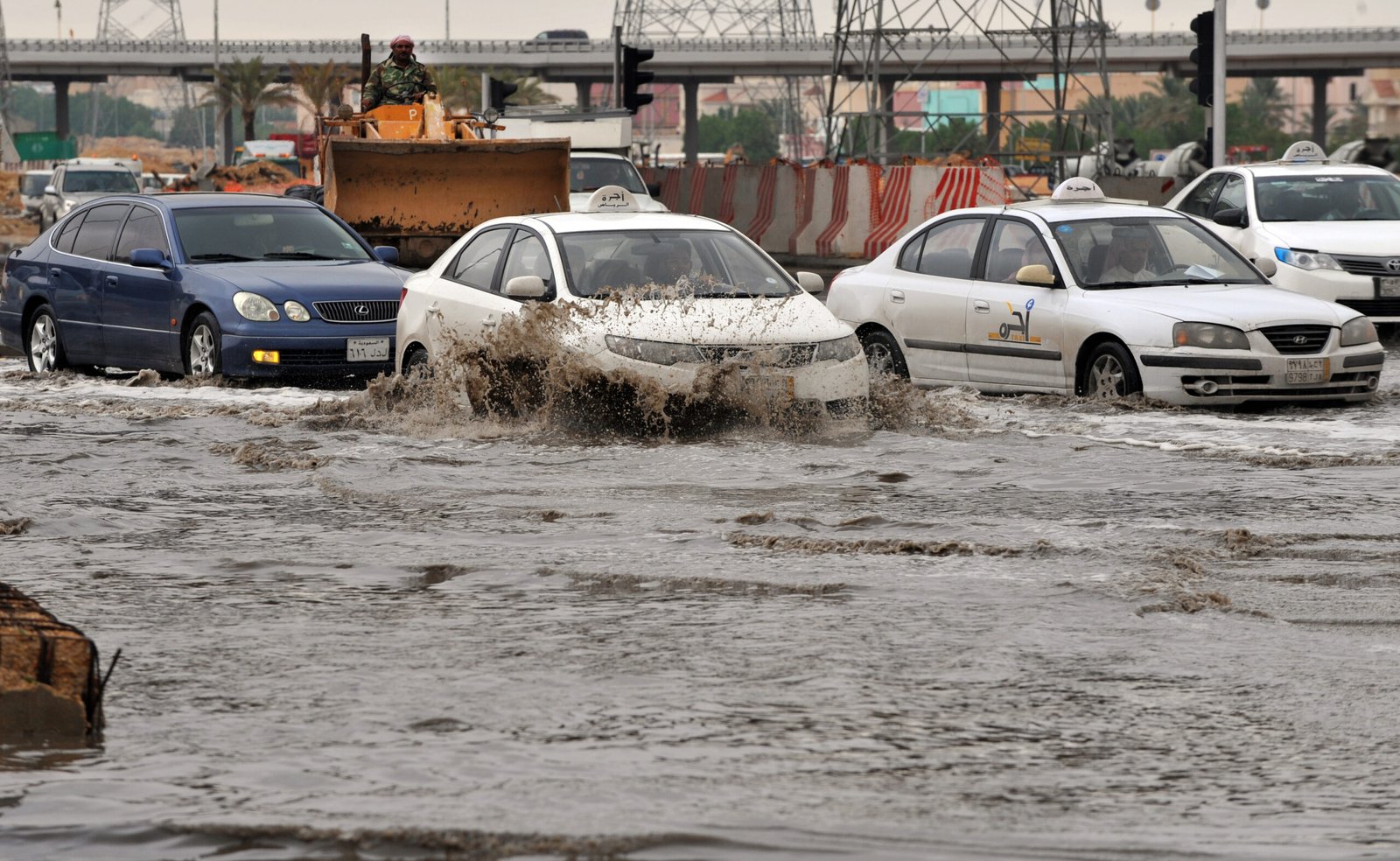In a startling turn of events, the arid landscapes of Saudi Arabia have transformed into raging rivers as the desert kingdom grapples with unprecedented torrential rainfall and flooding. What was once a scene of towering sand dunes and searing heat has given way to submerged streets, school closures, and a nation caught off guard by nature’s unpredictable fury.
Saudi Arabia Floods: A Climate Change Wake-Up Call
The Saudi Meteorology Department had issued a red alert for the Almadinah region, forecasting heavy rain and thunderstorms. However, the severity of the downpours has paralyzed several cities, necessitating road closures and the cancellation of in-person classes. While no casualties or significant public damage have been reported thus far, the government has urged citizens to exercise caution in the face of this unprecedented event.

A Rare Phenomenon in the Gulf Region
Saudi Arabia is not alone in its struggle against the elements. The past few weeks have seen a surge of extreme weather events across the Gulf region. Oman experienced flash floods, while Dubai received a year’s worth of rain in a single day. Experts attribute this anomaly to a low-pressure system that has developed over the Arabian Peninsula, exacerbated by the undeniable effects of climate change.
As the Earth continues to heat up, the atmosphere’s capacity to hold moisture increases, lveading to more intense and frequent rainfall events. For every 1°C rise in average temperature, the atmosphere can hold approximately 7% more moisture, resulting in heavier downpours over shorter periods and in smaller areas. Scientists warn that these floods have been 10% to 40% more intense than they would have been in a world without human-induced climate change.
Read More:- Trump and Biden: The Persuadable Voters That Could Decide 2024
A Wakeup Call for Preparedness
While heavy rain in the Gulf region was once a rarity, such freak weather events are becoming the new normal. Climate change is undoubtedly the invisible force behind these phenomena, and Saudi Arabia’s experience serves as a wake-up call for nations worldwide to prioritize preparedness and adopt strategies to mitigate the impacts of a warming planet.
Explore the world of anime! Watch Pop Media Pulse
